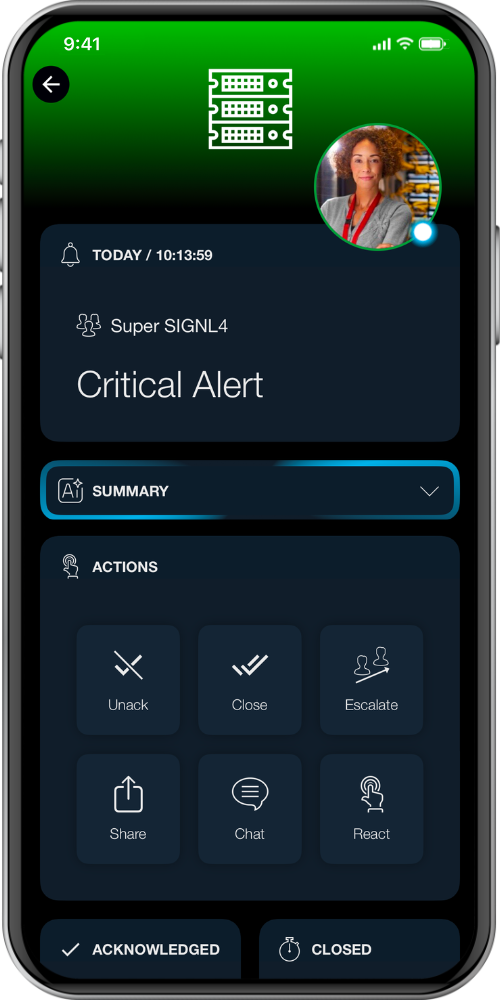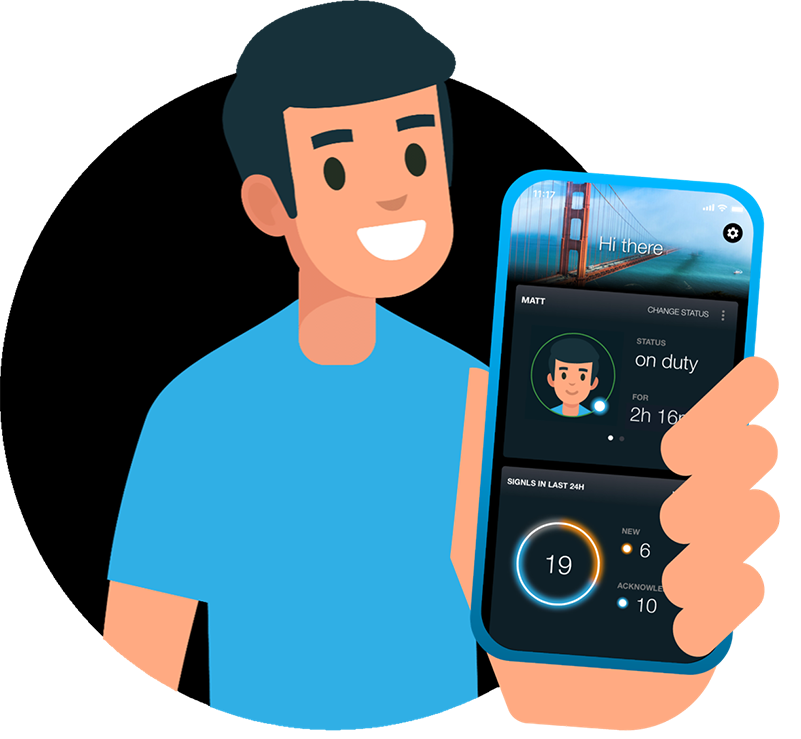Imagine this. You’re walking your dog, sipping a coffee, when your phone buzzes:
- Severe weather warning in your area.
- Dentist appointment in 30 minutes.
- Your package is out for delivery.
Each ping comes from a different app, but they all have one thing in common: notification software.
It’s woven into our everyday lives – quietly buzzing, blinking, or nudging us with information. But when it comes to critical operations in IT, healthcare, logistics, or utilities, not all notifications are created equal. Some are simply updates. Some are mass notifications. Others require immediate action.
And that’s when we go from notification software to alert notification software.
What Is Notification Software, Anyway?
Notification software refers to any system that delivers messages to users across digital devices —whether via mobile push notifications, email alerts, desktop banners, browser popups, or SMS texts.
It’s how systems communicate with us, from routine reminders via email marketing to important updates.
Common Types of Notifications:
- Push notifications (apps and mobile devices)
- Email notifications (reminders, updates, confirmations)
- SMS/text notifications
- Desktop/browser notifications
- In-app alerts and badges
These tools are used everywhere – from weather and news alerts to marketing campaigns and productivity reminders. Most of them fall into the “good to know” category: helpful but not urgent.
How Notification Software Platforms Supports Business Workflows
In many organizations, notification software is embedded into workflows to improve productivity, customer engagement, and task tracking. Think:
- Appointment confirmations from scheduling apps
- Shipment and delivery updates in e-commerce
- Low inventory warnings in retail systems
- Ticket assignment in helpdesk platforms
- Internal communication in workforce tools
These notifications keep people informed – but they don’t necessarily drive action. And when an operational issue hits, that’s where the distinction becomes critical.

When Email Notifications Aren’t Enough
Now, picture a different scenario. You’re not walking the dog. You’re managing a data center, a hospital network, or a manufacturing plant.
A critical server just failed. A security breach was detected. A key piece of equipment went offline.
You don’t want a ping. You need a persistent alert.
You don’t want to check your inbox. You need a response – now.
You don’t want a list of “who might’ve seen it.” You want to know exactly who is fixing it.
This is the gap traditional notification or emergency notification software doesn’t fill. Because urgency, accountability, and resolution aren’t just features—they are what differentiates the “nice to know” from “driving the action”.
From Notifications to Alerts: The Rise of Alert Notification Software
As business operations have become more complex, always-on, and globally distributed, traditional notification systems have started to fall short. A simple email or app ping might be fine for a calendar reminder – but not for a critical server failure at 2 a.m. or a production halt on the factory floor.
Operations teams need more than awareness. They need accountability, visibility, and confidence that someone is already taking action.
That’s where alert notification software comes in. It has evolved from basic notification tools into purpose-built systems designed for high-stakes environments and instant notifications. It brings structure, intelligence, and reliability – ensuring visual alerts that don’t just get sent, but get seen, owned, and resolved.
Today, it’s an essential part of operational resilience for DevOps teams, field service engineers, SOC/NOC centers, utilities, and healthcare providers – where response time directly impacts safety, uptime, and customer trust.
Key Features of Alert Notification Software:
- Multi-channel, real-time alerting (push, SMS, voice, email)
- On-call scheduling and tiered escalation
- Acknowledgment tracking and response ownership
- Integration with monitoring, ticketing, and ITSM tools
- Full audit trails and alert lifecycle visibility
This isn’t just software that talks. It listens, confirms, and escalates – until action is taken.

SIGNL4: A New Breed of Alert Notification Software
SIGNL4 represents a next-generation approach to alert notifications. Where traditional tools often rely on emails or static dashboards, SIGNL4 is designed with mobility, responsiveness, and accountability at its core.
It is built for modern, distributed operations teams and bridges the gap between traditional monitoring systems and real-time human response. SIGNL4 ensures that critical alerts reach the right person, on the right device, at the right moment, especially when teams are remote, on-call, or off-hours. It doesn’t just notify – it drives resolution.
Here is how SIGNL4 Adds Value:
- Mobile-First Design: Alerts are delivered directly to smartphones via push, SMS, and voice – ensuring critical information gets through immediately, no matter where your team is.
- Actionable Alerts: Each alert includes structured, contextual details that allow responders to acknowledge, collaborate, and even trigger automated remediation steps – all from the app.
- Built-In Scheduling & Escalation: SIGNL4 manages on-call rotations, applies escalation logic in real time, and always knows who’s responsible – so there’s no guesswork or lag.
- Audit-Ready Transparency: Every step – delivery, acknowledgment, handoff – is logged, creating a full trail for incident reporting, accountability, and analytics.
- Fast Setup and seamless integrations: With 185+ verified integrations and no heavy infrastructure required, teams can be up and running in minutes – not weeks
Whether it’s an IT outage, security threat, facility breach or equipment failure – SIGNL4 turns operational noise into clear, actionable alerts that teams can rely on.
Wrapping It Up
Notification software plays a vital role in keeping us connected to the systems, events, and updates that matter. But when response time is critical, organizations need more than just information – they need action and more visual notifications.
Alert notification software adds structure and accountability to ensure that critical events don’t slip through the cracks. In that it is clearly distinct from mass notification systems as it brings operational clarity to complex environments and keeps teams aligned, even after hours.
SIGNL4 represents the next step in this evolution: a mobile-first, cloud-native application built for real-time response in the field. By combining intelligent routing, clear ownership, and fast mobile access, it enables teams to handle critical events with speed and confidence – wherever they are.
Because in 24/7 operations, success depends on alerts that reach the right people – and trigger the right action.


